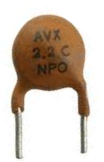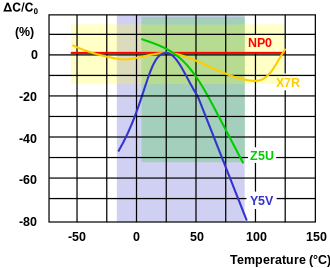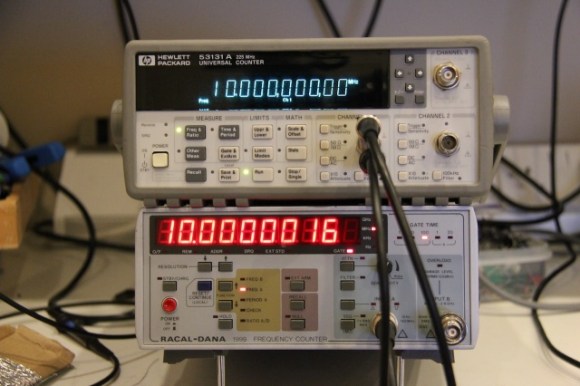Intro:
Got pretty tired of this radio taking so long warming up and being so far off freq, so I thought I would experiment a little bit with it. If you have ever owned one - and perhaps still do; then you must know what I mean here. Going to share my notes here so that there is a record of what transpired. I'll keep it to the point.
Mind you, I wouldn't call these mods a cure. I might perhaps call it a noticeable improvement, and I would also call it cost effective. Keep in mind that the point I am making here is that I just explored two avenues of approach to the problem. I would also call it a starting point, so anyone wanting to pick up where I left off; then no one would be more pleased than I.
None of these parts are expensive if you have some parts radios lying around and you have all of the correct values; but that is unlikely. You will find some useful values in junk radios, just not all the ones you will need. When first setting out to do this, the biggest problem faced was finding the vendors that have the parts. If you find/buy them online, you might pay 3X-5X what I had to pay. Fortunately, living in Silicon Valley does have some perks. One of which is having a few places that still carry a wide variety of electronic components. I bought 80% of the parts new and then scavenged old radio carcasses for the rest.
There are four oscillator circuits in this radio: the reference oscillator that works directly with the PLL chip linked with the voltage controlled oscillator, loop oscillator, and the carrier oscillator. If just one of these oscillators move off freq; the radio will experience drift. Usually this drift is normal in a radio that is warming up. Some radios have less, and then there are radios that have more; the Galaxy 949, 959, as well as other radios that use the EPT069610Z chassis in particular. Includes a couple of Ranger radios too, such as the 696 Freedom 1 that uses a very similar chassis. There are also spin off chassis in the 10m Galaxy radios that have the same problem with drift.
The Problem:
Going on the assumption (yes, I know) that capacitors (as well as a couple other key components, such as coils and resistors too) tune oscillators, and that capacitance will change with temperature, and this stray capacitance adds/subtracts from a stable state; then to improve the oscillator tuning capacitors would be the most logical place to start.
Most of the caps that were replaced in the radio's oscillators have a 'UJ' suffix. The UJ caps are - by far - not as nearly as stable with temperature change as the NP0 are. Not any where close - matter of fact. The mfr choices for using a poorer grade of parts in this radio has proved to be the cause of this drift issue - IMO. But there is another part/other aspects that affect drift which will be dealt with later on. Since these UJ caps used in production of these radios are found in key points of the many oscillator circuits, they seem to be the most likely culprits for causing drift. And - therefore - the ones that were chosen to be changed out with better caps.
From Wikipedia:
The Parts:
The two areas addressed here were the capacitors and the resistors. Certainly the tuning coils of the loop oscillator are responsible for the residual drift. Even the 1N4148 diodes in that circuit add stray capacitance when warming up.
These parts I chose are not exactly off-the-shelf items. Not exactly easy to find, but with little effort you can duplicate what I used with some time shopping online. Or, perhaps you have a supplier nearby if you live in a large enough city/town that carry these NP0 grade caps. Mouser Electronics has most of them - BTW.
http://in.mouser.com/Passive-Compon...itors-MLCC-Leaded/_/N-bkrdj?P=1yzt48aZ1z0x7lp
The capacitors chosen for this experiment are mostly NP0 (that's 'N-P-Zero') caps, along with some close-tolerance MLCC/monolithic caps that do not share the same tight tolerance in regard to temperature/capacitance stability as the NP0's. Reason is, I simply could not find all of the NP0 caps that I would have liked to.
Ceramic NP0

Monolithic X7R

Temp vs capacitor stability:

Part 2:
Tomorrow.
Got pretty tired of this radio taking so long warming up and being so far off freq, so I thought I would experiment a little bit with it. If you have ever owned one - and perhaps still do; then you must know what I mean here. Going to share my notes here so that there is a record of what transpired. I'll keep it to the point.
Mind you, I wouldn't call these mods a cure. I might perhaps call it a noticeable improvement, and I would also call it cost effective. Keep in mind that the point I am making here is that I just explored two avenues of approach to the problem. I would also call it a starting point, so anyone wanting to pick up where I left off; then no one would be more pleased than I.
None of these parts are expensive if you have some parts radios lying around and you have all of the correct values; but that is unlikely. You will find some useful values in junk radios, just not all the ones you will need. When first setting out to do this, the biggest problem faced was finding the vendors that have the parts. If you find/buy them online, you might pay 3X-5X what I had to pay. Fortunately, living in Silicon Valley does have some perks. One of which is having a few places that still carry a wide variety of electronic components. I bought 80% of the parts new and then scavenged old radio carcasses for the rest.
There are four oscillator circuits in this radio: the reference oscillator that works directly with the PLL chip linked with the voltage controlled oscillator, loop oscillator, and the carrier oscillator. If just one of these oscillators move off freq; the radio will experience drift. Usually this drift is normal in a radio that is warming up. Some radios have less, and then there are radios that have more; the Galaxy 949, 959, as well as other radios that use the EPT069610Z chassis in particular. Includes a couple of Ranger radios too, such as the 696 Freedom 1 that uses a very similar chassis. There are also spin off chassis in the 10m Galaxy radios that have the same problem with drift.
The Problem:
Going on the assumption (yes, I know) that capacitors (as well as a couple other key components, such as coils and resistors too) tune oscillators, and that capacitance will change with temperature, and this stray capacitance adds/subtracts from a stable state; then to improve the oscillator tuning capacitors would be the most logical place to start.
Most of the caps that were replaced in the radio's oscillators have a 'UJ' suffix. The UJ caps are - by far - not as nearly as stable with temperature change as the NP0 are. Not any where close - matter of fact. The mfr choices for using a poorer grade of parts in this radio has proved to be the cause of this drift issue - IMO. But there is another part/other aspects that affect drift which will be dealt with later on. Since these UJ caps used in production of these radios are found in key points of the many oscillator circuits, they seem to be the most likely culprits for causing drift. And - therefore - the ones that were chosen to be changed out with better caps.
From Wikipedia:
Class 1 ceramic capacitors are accurate, temperature-compensating capacitors. They offer the most stable voltage, temperature, and to some extent, frequency. They have the lowest losses and therefore are especially suited for resonant circuit applications where stability is essential or where a precisely defined temperature coefficient is required, for example in compensating temperature effects for a circuit.
Ceramic capacitor - Wikipedia, the free encyclopediaClass 1 capacitors have a temperature coefficient that is typically fairly linear with temperature. These capacitors have very low electrical losses with a dissipation factor of approximately 0.15%. They undergo no significant aging processes and the capacitance value is nearly independent of the applied voltage. These characteristics allow applications for high Q filters, in resonant circuits and oscillators (for example, in phase-locked loop circuits)
The Parts:
The two areas addressed here were the capacitors and the resistors. Certainly the tuning coils of the loop oscillator are responsible for the residual drift. Even the 1N4148 diodes in that circuit add stray capacitance when warming up.
These parts I chose are not exactly off-the-shelf items. Not exactly easy to find, but with little effort you can duplicate what I used with some time shopping online. Or, perhaps you have a supplier nearby if you live in a large enough city/town that carry these NP0 grade caps. Mouser Electronics has most of them - BTW.
http://in.mouser.com/Passive-Compon...itors-MLCC-Leaded/_/N-bkrdj?P=1yzt48aZ1z0x7lp
The capacitors chosen for this experiment are mostly NP0 (that's 'N-P-Zero') caps, along with some close-tolerance MLCC/monolithic caps that do not share the same tight tolerance in regard to temperature/capacitance stability as the NP0's. Reason is, I simply could not find all of the NP0 caps that I would have liked to.
Ceramic NP0
Monolithic X7R

Temp vs capacitor stability:

Part 2:
Tomorrow.
Attachments
Last edited:







